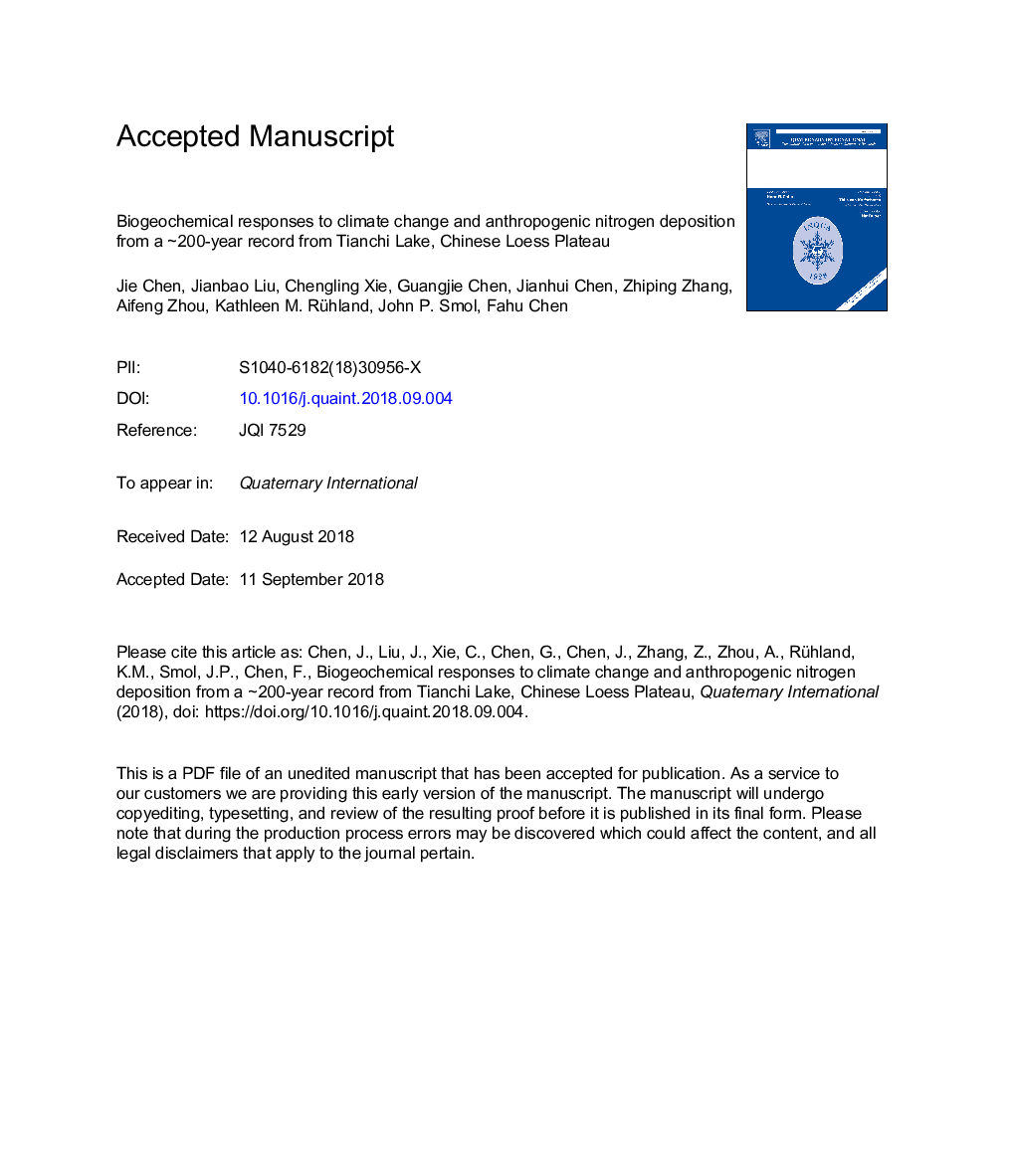| کد مقاله | کد نشریه | سال انتشار | مقاله انگلیسی | نسخه تمام متن |
|---|---|---|---|---|
| 12132187 | 944683 | 2018 | 36 صفحه PDF | دانلود رایگان |
عنوان انگلیسی مقاله ISI
Biogeochemical responses to climate change and anthropogenic nitrogen deposition from a â¼200-year record from Tianchi Lake, Chinese Loess Plateau
ترجمه فارسی عنوان
پاسخ های بیولوژیکی شیمیایی به تغییرات آب و هوایی و رسوب نیتروژنی انسان از یک رکورد 200 میلیارد سال یک گیگا بایکا از دریاچه تیانچی، چابهار لوس پلاس
دانلود مقاله + سفارش ترجمه
دانلود مقاله ISI انگلیسی
رایگان برای ایرانیان
کلمات کلیدی
موضوعات مرتبط
مهندسی و علوم پایه
علوم زمین و سیارات
زمین شناسی
چکیده انگلیسی
Human activities over the last â¼100 years have fundamentally changed the biogeochemistry of the global nitrogen cycle. For example, increased nitrogen deposition from industrial and agricultural sources has been linked to lake acidification and nutrient fertilization, and thus it has the potential to significantly influence lake ecosystems. Records of anthropogenic nitrogen deposition from alpine lakes are sparse in China, which limits our understanding of its effects on remote alpine lake ecosystems. In this study, we analyzed multiple geochemical proxies at Tianchi Lake (2430â¯m a.s.l.), which is part of the Liupan Mountains National Nature Reserve in the central Chinese Loess Plateau (CLP). We measured total nitrogen (TN) concentrations, C/N ratios and nitrogen stable isotope ratios (δ15N), as well as a biological proxy (spectrally-inferred chlorophyll a), from a well-dated sediment core spanning the past â¼200 years. Our aim was to examine anthropogenic nitrogen deposition to the lake and to assess its implications for lake primary production. We found that δ15N was stable prior to â¼1980, but it decreased significantly thereafter. This is consistent with documented changes in anthropogenic nitrogen deposition over the past â¼200 years, and it indicates that the δ15N record of Tianchi Lake likely reflects anthropogenic nitrogen deposition, at least in this region. Prior to â¼1980, the trend in primary production of Tianchi Lake agrees with the trend of reconstructed regional temperature, when reactive nitrogen emissions in China were very low. This suggests that temperature was likely the main factor driving lake primary production before â¼1980. Primary production has increased significantly since â¼1980, consistent with the continued rising temperature and with enhanced nitrogen deposition, indicating that both factors are simultaneous drivers. Although the current data for Tianchi Lake are insufficient to unequivocally determine which of the two stressors is more important after the 1980s, temperature likely played the more significant role in driving primary production. This is because the lake is phosphorus-limited today, and in addition there is a strong association between temperature and chlorophyll a over the past â¼200 years. Continuing global warming and increasing nitrogen deposition in the future will likely further affect the fragile alpine ecosystems in the region.
ناشر
Database: Elsevier - ScienceDirect (ساینس دایرکت)
Journal: Quaternary International - Volume 493, 10 November 2018, Pages 22-30
Journal: Quaternary International - Volume 493, 10 November 2018, Pages 22-30
نویسندگان
Jie Chen, Jianbao Liu, Chengling Xie, Guangjie Chen, Jianhui Chen, Zhiping Zhang, Aifeng Zhou, Kathleen M. Rühland, John P. Smol, Fahu Chen,
